
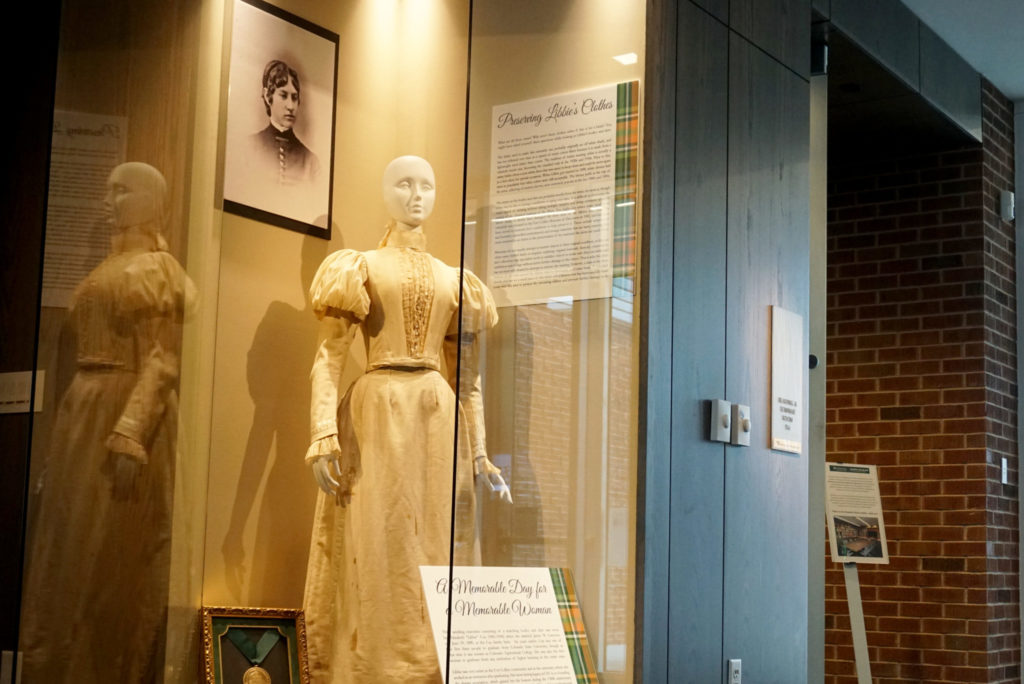
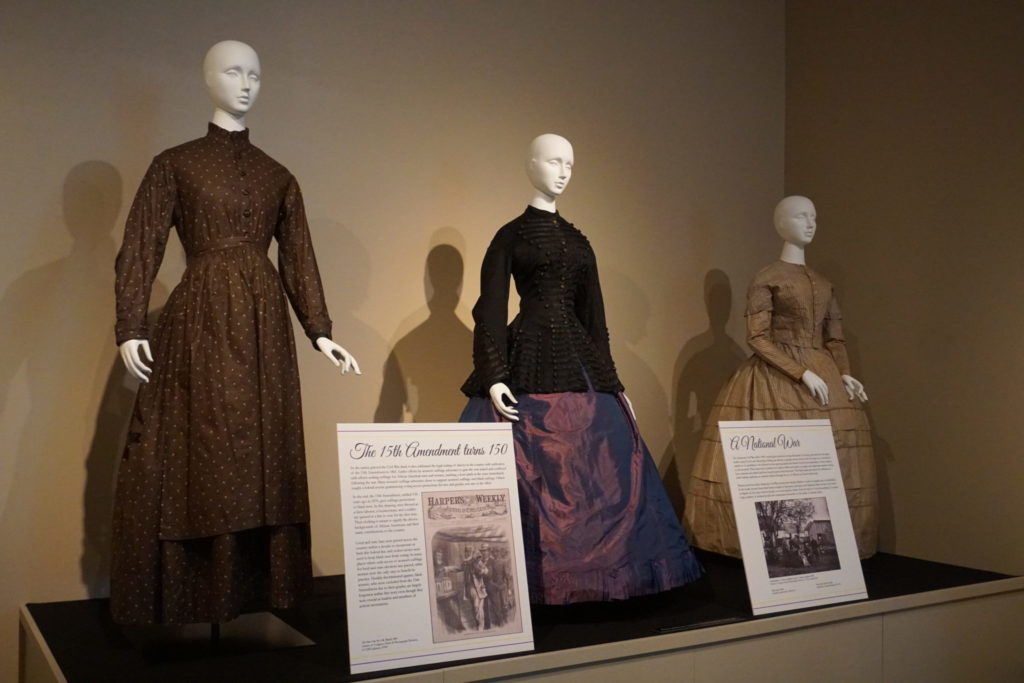
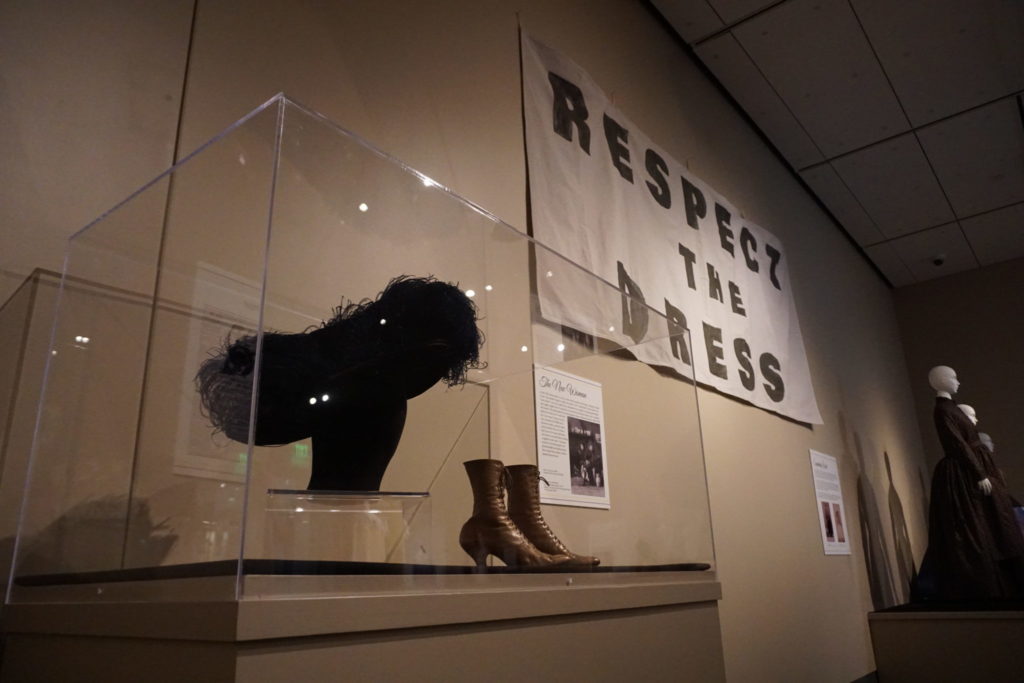
Photos by Avery Martin
To celebrate the 100th anniversary of the ratification of the 19th Amendment, the Avenir Museum of Design and Merchandising has created a suffrage-themed exhibition examining how women’s attire in the U.S. has changed in response to the activism of the times.
The Colorado State University museum has also reinvented two exhibits launched last fall to commemorate CSU’s 150th birthday: “Proud to Wear: CSU150” and “Women Wear at CSU.” Both now feature new items that weren’t on display in the fall.
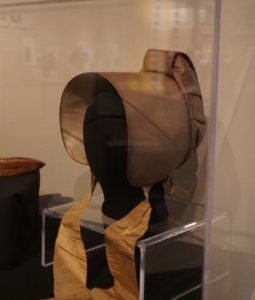 “R.E.S.P.E.C.T. the Dress: Clothing and Activism in U.S. Women’s History,” opened Jan. 21 in the Avenir Museum Large Gallery and runs through May 23. Students in Curator Katie Knowles’ spring 2019 graduate course “Care and Exhibit of Museum Collections” helped research and plan the exhibit, determining the chronological order of the displays, finding historical photos and compiling text for the labels.
“R.E.S.P.E.C.T. the Dress: Clothing and Activism in U.S. Women’s History,” opened Jan. 21 in the Avenir Museum Large Gallery and runs through May 23. Students in Curator Katie Knowles’ spring 2019 graduate course “Care and Exhibit of Museum Collections” helped research and plan the exhibit, determining the chronological order of the displays, finding historical photos and compiling text for the labels.
Libbie Coy dress
Visitors are greeted in the Avenir lobby with the perfect item to introduce all three exhibits: the 1890 wedding dress of Elizabeth “Libbie” Coy, who in 1884 was the only female among the first three graduates of CSU, then known as the State Agricultural College. Coy, who was the first woman to graduate from any institution of higher learning in the state, remained active at the college after graduation, founding the alumni association and working as an instructor.
“R.E.S.P.E.C.T. the Dress” begins with the early days of the United States, with a printed reproduction of an 1823 portrait painting of Sarah Gilmor, the wife of a merchant who primarily traded with East India. She is pictured wearing attire that reflects her husband’s career, identity and social standing, including a “fashionable turban.”
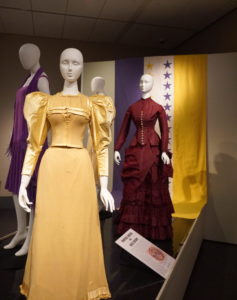 The exhibit then moves through U.S. history, documenting the clothing changes that came with the beginning of the suffrage movement at the 1848 Seneca Falls Convention, where 68 women and 32 men signed the “Declaration of Sentiments.” Displays feature an illustration of a “bloomer costume” named after social activist Amelia Bloomer; a style of dress worn over a cage crinoline, or steel hoop skirt; a dark purple dress and black jacket reflecting a typical mourning outfit worn by women who had loved ones killed in the Civil War; and a maternity dress from the period of westward expansion.
The exhibit then moves through U.S. history, documenting the clothing changes that came with the beginning of the suffrage movement at the 1848 Seneca Falls Convention, where 68 women and 32 men signed the “Declaration of Sentiments.” Displays feature an illustration of a “bloomer costume” named after social activist Amelia Bloomer; a style of dress worn over a cage crinoline, or steel hoop skirt; a dark purple dress and black jacket reflecting a typical mourning outfit worn by women who had loved ones killed in the Civil War; and a maternity dress from the period of westward expansion.
There are photos of a Native American woman wearing traditional dress as well as non-native school attire, and a self-portrait by photographer Frances Johnston, who is pictured in a most unladylike light for the times: wearing a boy’s cap and hiked-up skirts, smoking a cigarette and holding a beer stein.
“Fashion as Self-Defense” features a blue picture hat that would have been held in place by a long hat pin, “which women discovered make great self-defense weapons,” Knowles said. The main runway at the center of the gallery features a parade of mannequins wearing apparel from the late 1800s and early 1900s. The formation resembles a protest march, led by women clad in white, a color chosen by suffragists because it was visually striking and readily available in most wardrobes.
Evening lectures
The Avenir Museum of Design and Merchandising will host two events as part of its Thursday Evening Lecture Series this spring. Both events, which are free and open to the public, will be held from 7 to 8:30 p.m. in the Avenir Museum, at 216 E. Lake St., Classroom 157.
On March 12, the speaker will be Einav Rabinovitch-Fox, a faculty member who teaches courses in American culture and history, fashion, consumer culture and politics, and women’s and gender studies at Case Western Reserve University in Ohio. In conjunction with the Avenir Museum’s exhibit R.E.S.P.E.C.T. the Dress: Clothing and Activism in U.S. Women’s History, she will discuss women’s uses of fashion as a means of negotiating new freedoms and of expressing modern political and gender identities, and how questions of beauty and appearance were an important part of feminist struggles and ideology during the twentieth century.
On April 23, staff from the Molly Brown House Museum will deliver a presentation on the local Colorado suffrage movement, including Margaret “Molly” Brown’s involvement in the national movement, as seen through the evolution of women’s apparel from 1900 to 1920. How a woman of 1920 dressed was very different from how a woman of 1900 dressed, and hemlines weren’t the only things that were contentious. Not only were women fighting about whether bustles were in or out — they were also fighting for the right to vote. Suffragists used clothing strategically to make statements about their radical message, and prominent Denver socialite Brown was one of them.
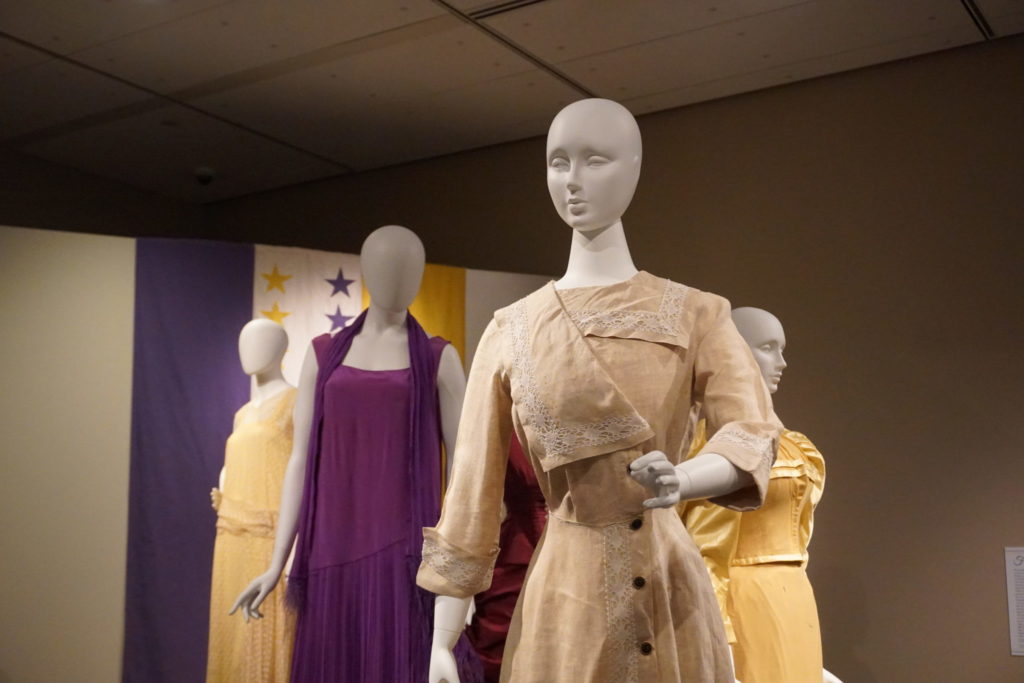
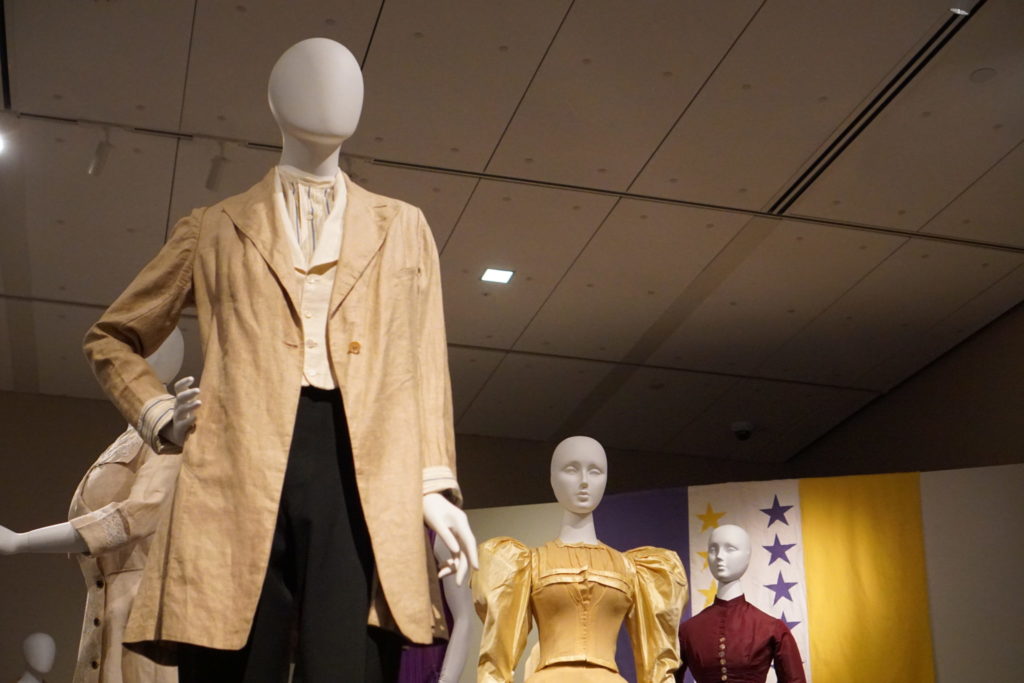
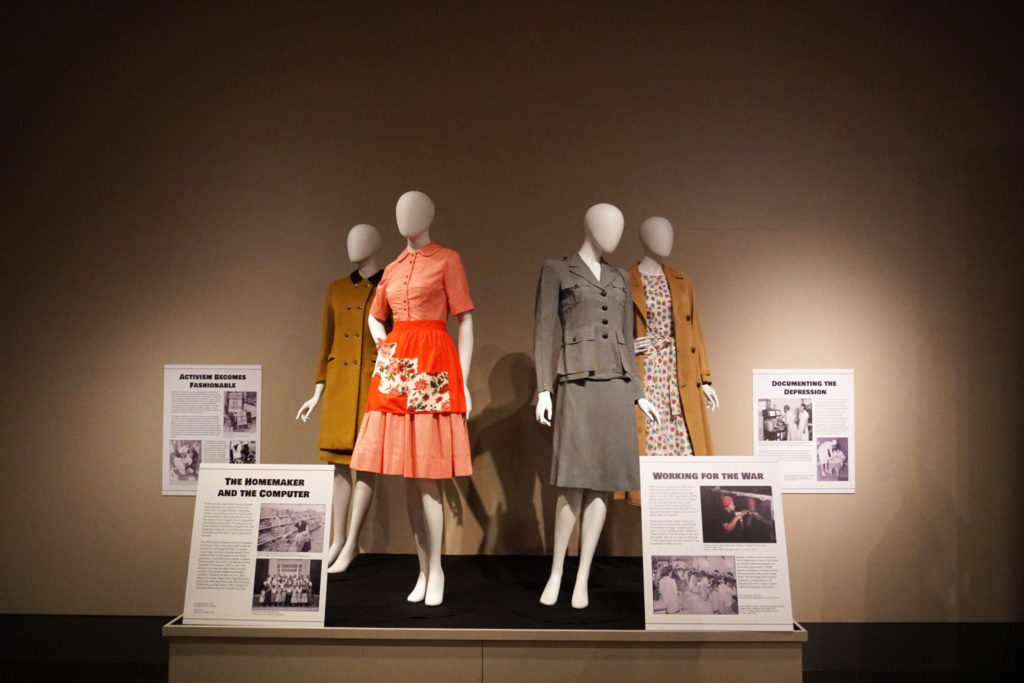
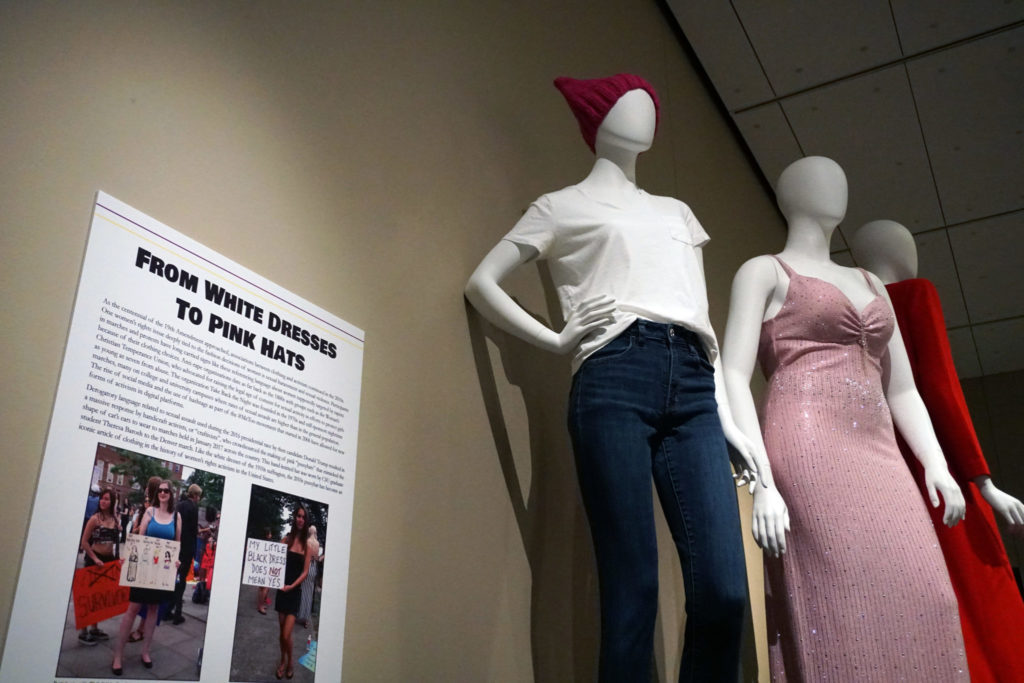
A replica of a white, purple and yellow “Ratification Flag” used by Loveland sculptor Jane DeDecker to create a 19th Amendment memorial proposed for Washington, D.C., serves as a backdrop to the procession.
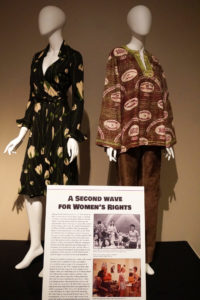 Moving into the modern era
Moving into the modern era
The evolution continues with displays of men’s suits worn by women, shirtwaists, wheat-embroidered attire recognizing Western states’ early contributions to the suffrage movement, flapper dresses and clothing worn during the Great Depression. There is a gray Red Cross uniform from the World War II era as well as a tribute to Rosie the Riveter, followed by depictions of female homemakers in the 1950s, including a woman wearing white gloves as she shops for canned goods at a grocery store.
The exhibit takes the visitor through the changing fashions and activism of the 1960s and 1970s, with photos of women protesting for peace, using nonviolent resistance tactics while being arrested, participating in a farm labor march, speaking for and against the Equal Rights Amendment, and wearing a “Lavender Menace” shirt to oppose anti-lesbian sentiments in the National Organization for Women.
The 1980s portion of the show is appropriately titled “Power Suits and Sweat Pants,” while “Bold Colors for Bold Women” describes the 1990s. Representing those two decades are a blue power suit, a picture of a woman in casual wear breastfeeding in a park, a photo of women senatorial candidates and a red Liz Claiborne dress, which Knowles jokingly refers to as “the Elaine dress from Seinfeld.”
Capping off the exhibit are displays about the last two decades, including nods to soccer player Brandi Chastain famously removing her jersey at the 1999 FIFA Women’s World Cup Final, the #MeToo movement and the response to derogatory language related to sexual assault from then-presidential candidate Donald Trump in 2016.
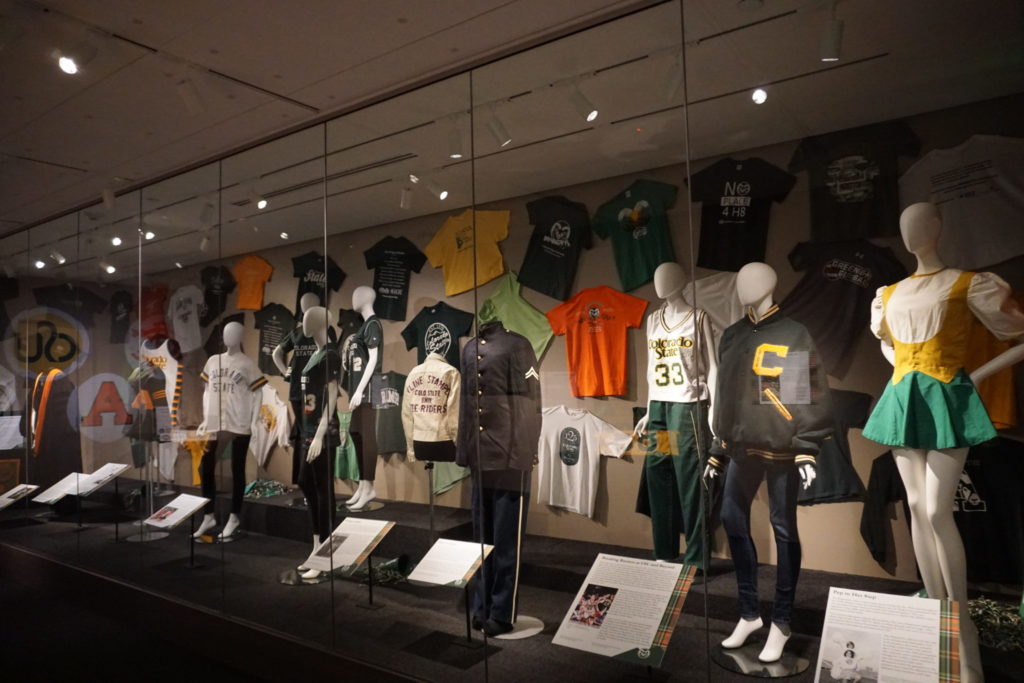
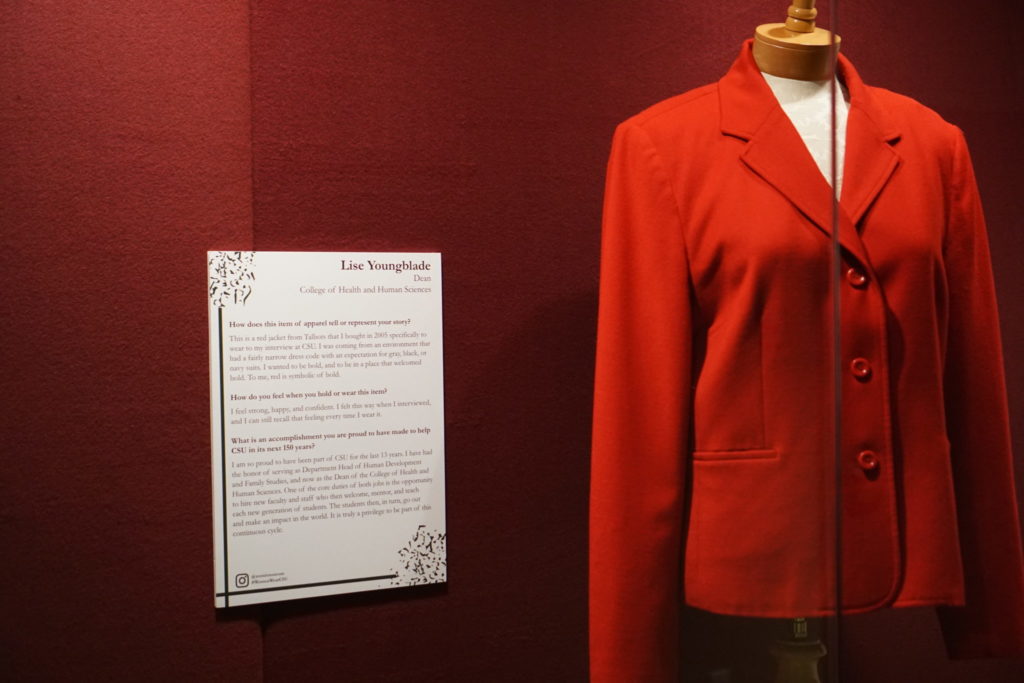

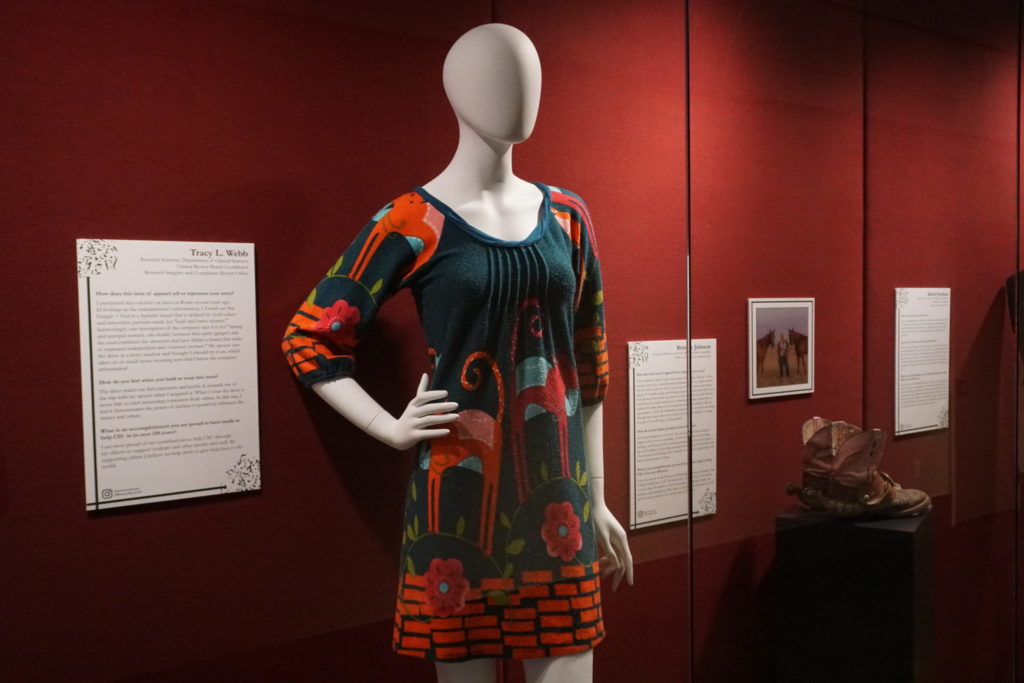
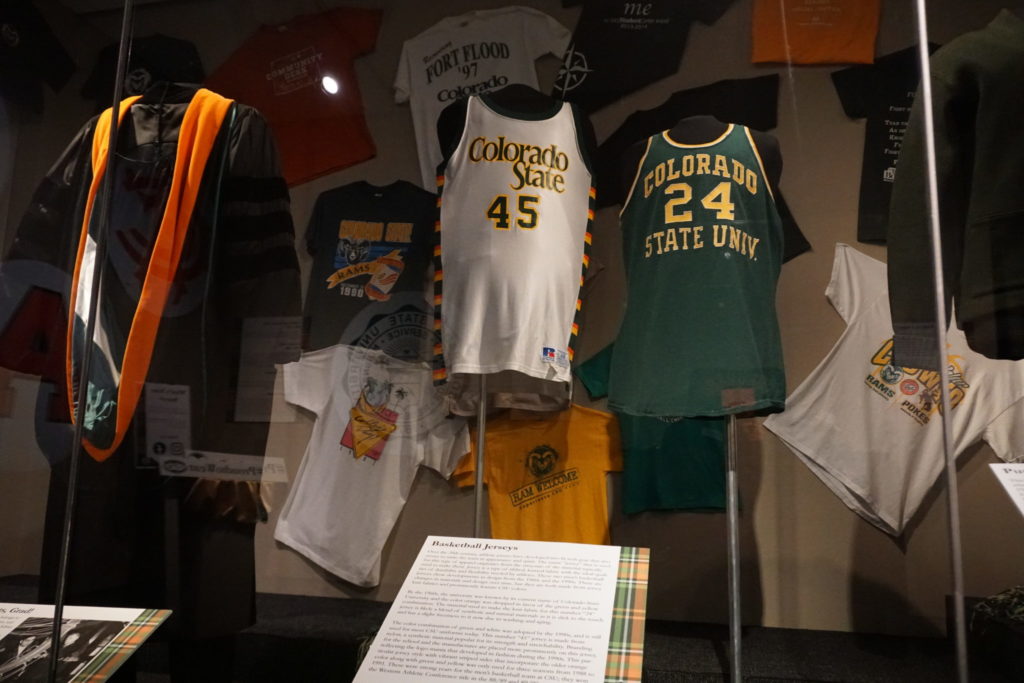
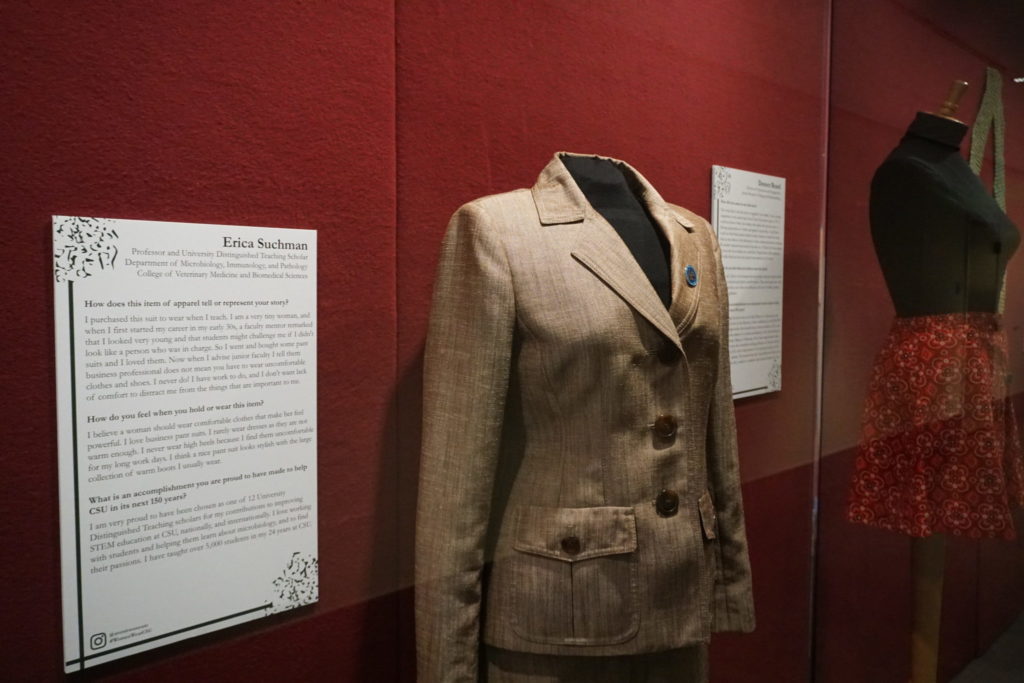

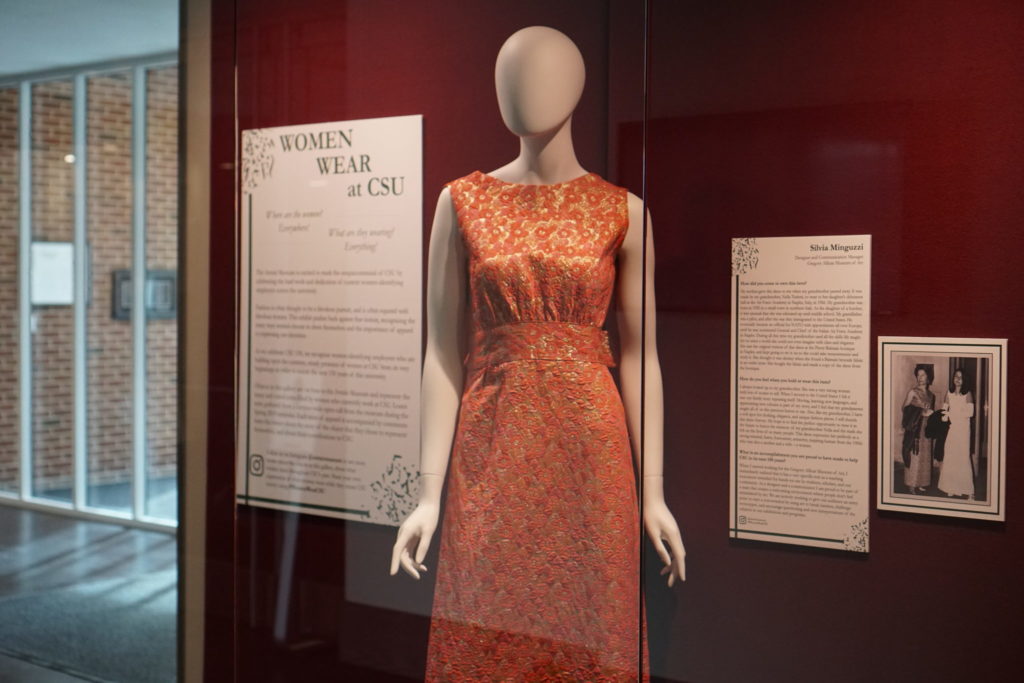
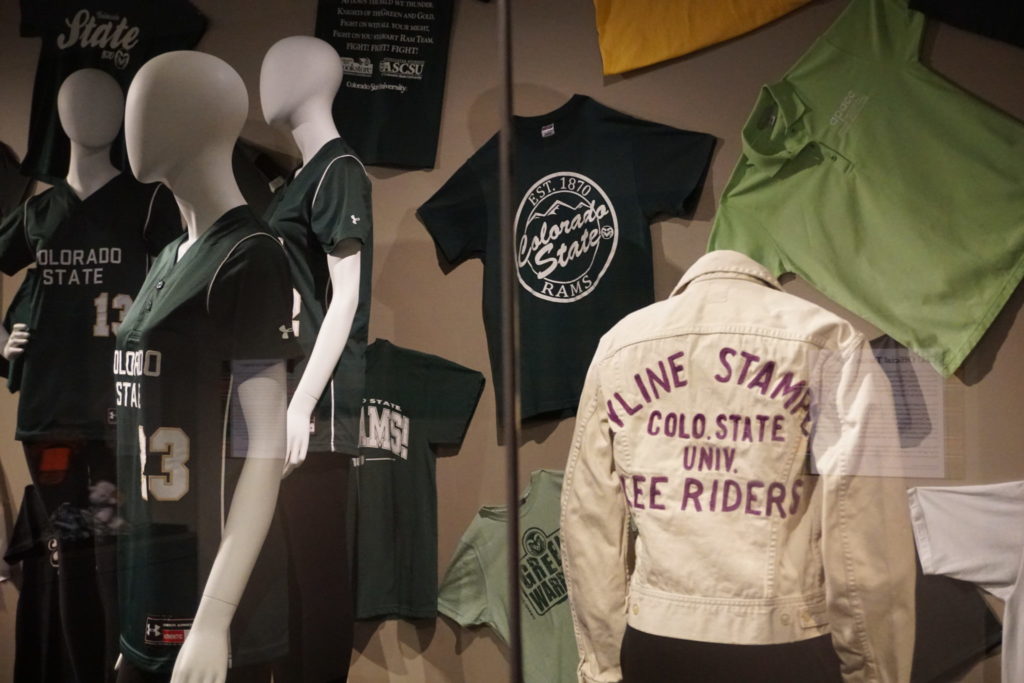
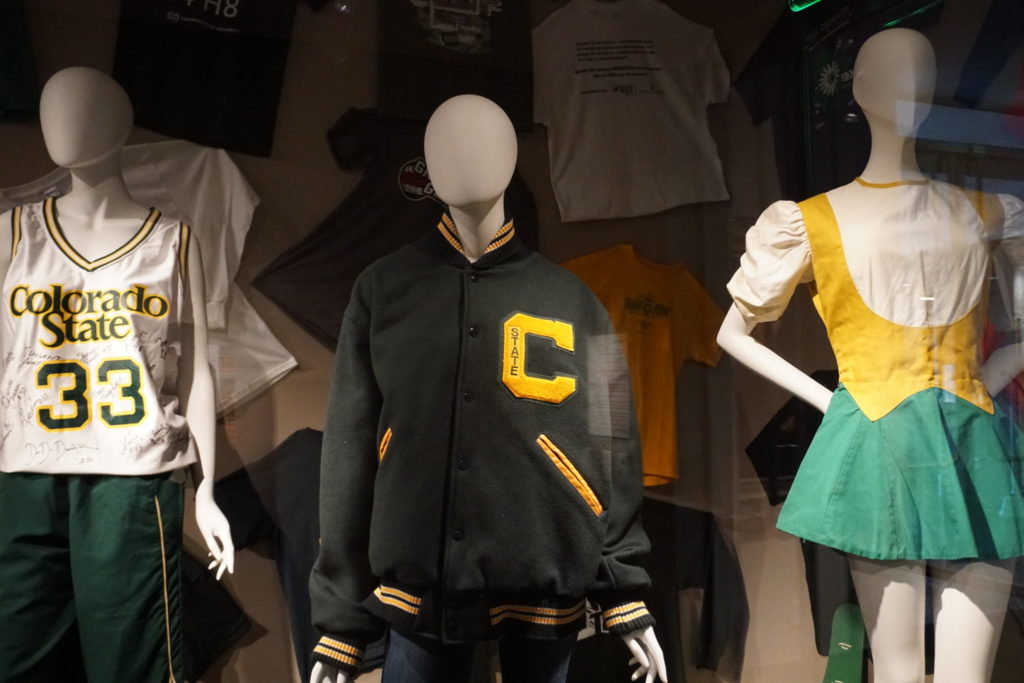
Proud to Wear, Women’s Wear
The spring version of “Proud to Wear: CSU150,” which runs through June 27, features a new collection of items that have a decidedly female bent, from a rodeo queen jacket and cheerleader outfit to former CSU basketball player Katie Cronin’s jersey and uniforms worn by the Hutton sisters, who all played softball for CSU. There are also items from the 1990 Freedom Bowl (including a “Scrub the Ducks” button) and the academic regalia of former CSU President A.R. Chamberlain, who received the first Ph.D. the University ever awarded.
“Women Wear at CSU,” which runs through May 23, also features an all-new collection of attire and accessories on loan from women at the University. They include a dress made by the grandmother of Silvia Minguzzi of the Allicar Museum of Art; a suit from Erica Suchman of the Department of Microbiology, Immunology and Pathology; a wrap skirt made by Avenir Director of Operations and Engagement Doreen Beard in junior high; and a scarf from Suzanne Hale of the Allicar.
There is a Spanish cat dress from Tracy L. Webb of the Research Integrity and Compliance Review Office, spurs and boots from Brittany Johnson of University Advancement, a handbag from Kristin Stephens of the Department of Statistics and a red Talbot’s jacket that College of Health and Human Sciences Dean Lise Youngblade bought in 2005 for her first job interview at CSU.
The Avenir Museum of Design and Merchandising is in the Department of Design and Merchandising, part of CSU’s College of Health and Human Sciences.